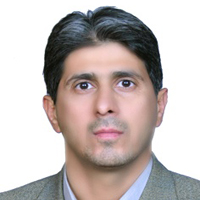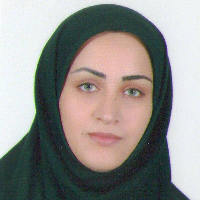Evaluation of the Degree of Torticollis and Scoliosis in Elite Freestyle Wrestlers with Cauliflower Ears
Author(s):
Article Type:
Research/Original Article (دارای رتبه معتبر)
Abstract:
Purpose
Wrestling is one of the oldest competitive sports and has two styles including freestyle and western. One of the most important pillars of the human body is the spine. The most important spinal disorders are: forward head, torticollis, kyphosis, lordosis, and scoliosis. Therefore, the main purpose of this study was to evaluate the degree of torticollis and scoliosis in elite freestyle wrestlers with cauliflower ears.Methods
The present study was a descriptive-analytical study. The subjects of the study were 120 elite male freestyle wrestlers who were in Tehran clubs with an average age of 24.65±4.39 years, weight of 75.31±11.38 kg, height 174.65±4.3 cm and sports history 9.80±2.63. To evaluate the degree of torticollis by photogrammetric method Corel X6 software was used. To evaluate the slope of scoliosis with the help of a researcher-made scoliometer mobile application was employed in Shahid Sabouri Club, 17th district of Tehran. In data analysis, the mean degrees of torticollis and scoliosis were estimated by calculating the 95% confidence interval. In addition, the data were analyzed by independent t-test, Mann-Whitney and Chi-square at a level of 5% error using version 24 of SPSS software.Results
The mean neck slope was 5.68 degrees (with a 95% confidence interval of 5.22-6.15) and the mean spine slope was 3.02 degrees (with a 95% confidence interval of 2.84-3.21). A significant relationship was observed between the superior hand and foot with the fracture side of the ear and the deviation side in the spine (p <0.001).Conclusion
Considering that torticollis causes unequal shoulder on the same side, scoliosis occurs in the lower segment on the same side. Elite wrestlers have strong muscles in the neck and shoulder girdle, so the corrective exercises of these two sections can be used in amateur wrestlers to prevent these two complications.Keywords:
Language:
Persian
Published:
Journal of Paramedical Science and Rehabilitation, Volume:10 Issue: 3, 2021
Pages:
38 to 48
https://magiran.com/p2369490
سامانه نویسندگان
مقالات دیگری از این نویسنده (گان)
-
Effect of Corrective Exercises Combined With Massage Therapy on Hand Grip Strength, Hand Range of Motion and Wrist Pain in Female Karate Players With Carpal Tunnel Syndrome
Vida Samadian, *, Hassan Daneshmandi, Mohammadhossein Alizadeh
Scientific Journal of Rehabilitation Medicine, -
Effect of Stop-X Injury Prevention Program on LESS and Proprioception of Child Soccer Players with Dynamic Knee Valgus
A .Eslami *, M .Sahebozamani, S. Bahiraei
Journal of Paramedical Science and Rehabilitation, -
Comparison of isokinetic strength of shoulder rotator muscles among volleyball players with and without scapulae dyskinesia
Gholamreza Norouzi, Hooman Minoonejad *,
Journal of Sport Medicine Review, -
The Effect of Selected Respiratory and Core Stability Tele Exercises on Postural Control, Fatigue and Quality of Life in Covid-19 Discharged Survivors: A Randomized Clinical Trial
Mohammad Mashhadi *, , Abdolhamid Daneshjoo, Seyyed Hassan Adeli
Journal for Research in Sport Rehabilitation,



